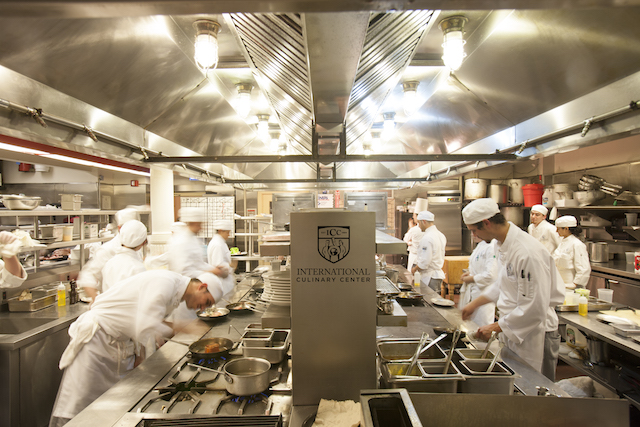When Chef Candy Argondizza, vice president of culinary and pastry arts at the International Culinary Center (ICC) brings new students into the kitchen, she makes sure they can take the heat. “As I tell students all the time, this profession chooses you; you don’t choose it,” she says.
RELATED:Can higher ed for inmates help them once they’re out of prison? As a 37-year industry veteran and an alum of esteemed New York eateries such as Remi and Tavern on the Green, Argondizza knows firsthand just how grueling a chef’s life can be. That’s precisely why the professional culinary arts program at ICC replicates the “vigor and tenacity” of a professional kitchen. “It is extremely rewarding work, but you have to really want to do it,” says Argondizza.
RELATED: The risks and rewards of emergecny nursing What the program is cooking up The only program prerequisites are a high school diploma and a short essay. However, a zest for the culinary arts is an unofficial must.
“It’s physical, it’s demanding, but I think it really speaks to people who don’t fit into a 9 to 5 desk job, who want to be creative, who want to be on their feet, who want a goal-oriented way of life. Every day you have a list and you just check it off, and there’s something really gratifying about that,” she says. Chef-instructors teach students how to braise, poach, grill, saute and roast, increasing the complexity and nuance of their lessons each month. In a typical class, lectures and demos are followed by student attempts to duplicate dishes at their own stations. Afterwards, the chef-instructor tastes and critiques. “At school we give them that sort of training because they’re getting constant feedback from the chefs, whether it needs salt, it needs acid, it’s too thin, it’s too thick, so you get used to the constant critiquing, which I think sets you up for when you leave here,” says Argondizza. In part, that’s where the externship comes in. Students are encouraged to select an eatery that aligns with their abilities and professional goals; one recent graduate decided to do his externship at Jacques Torres Chocolate in Brooklyn to pursue an interest in chocolate production. A Hawaii native, the student hoped to bring what he learned back home, where he could take advantage of Hawaii’s huge cocoa industry and perhaps start a small company. Professional opportunities The program leads students down myriad paths within the food industry.
“Not everyone might want to be in the kitchen anymore; they might want to be a food blogger or a food stylist, a caterer, a personal chef— but we feel strongly that, no matter what you want to do, you still have to understand what happens in the process of cooking,” says Argondizza. In a changing industry, Argondizza is both old-school and forward-thinking. She swears by Jacques Pépin’s legendary “La Technique,” and oversees a cutting-edge curriculum. She’s firm in her belief that only “one-tenth of one percent” of chefs became celebrities a la Gordon Ramsay and Bobby Flay, and if you’re getting a culinary certification because you want to be famous, you’re probably in the wrong industry. And she’s also truly passionate about what she does each day. “It’s not for everybody, but the people that it really resonates with love it. It’s hard work, but it pays off.”
Students in ICC’s professional culinary arts certificate program undertake four months of full-time or six months of part-time instruction, followed by a 200 hour externship. The school attracts a range of students with varying ability levels, and federal financial aid and scholarships are available for those who qualify.
ICC students have a 91.5 percent graduation rate as of 2015, and alums work at a range of New York hotspots including Gramercy Tavern and Osteria Morini. In New York, the average salary for a chef de cuisine is $76,379, according to job and recruiting site Glassdoor.
Taking the heat at culinary school

iStock
























